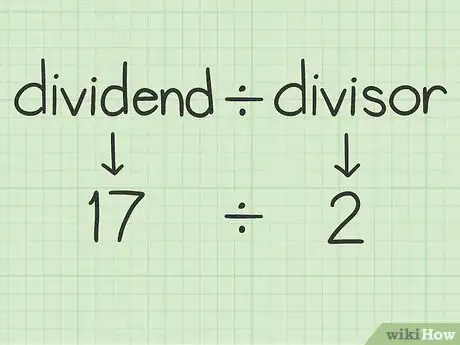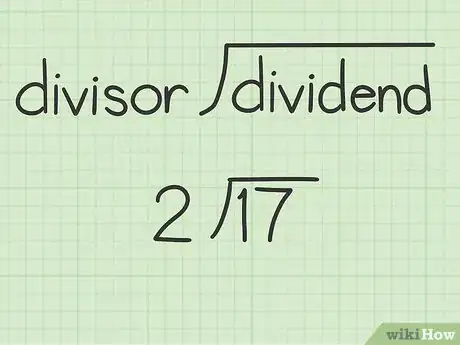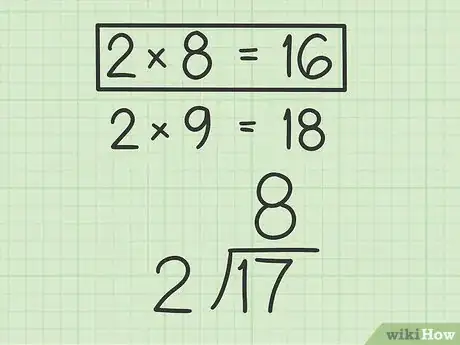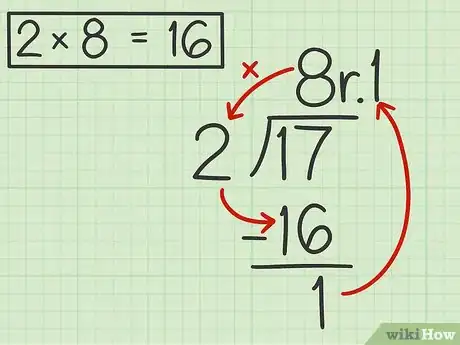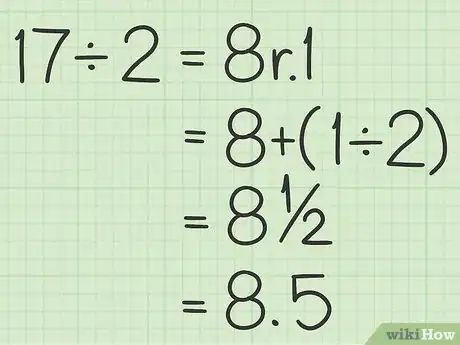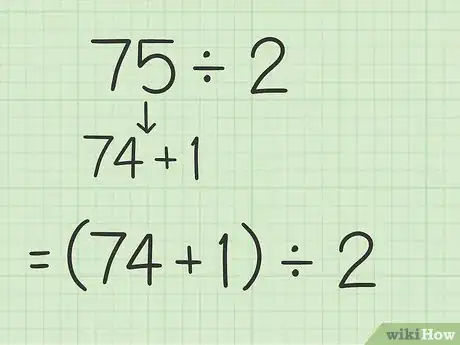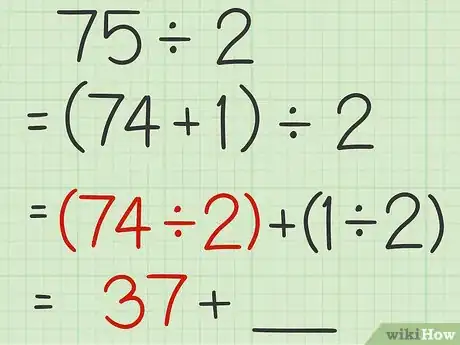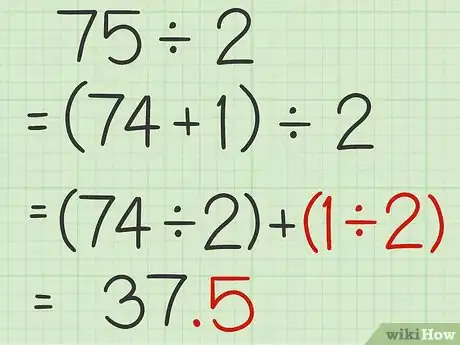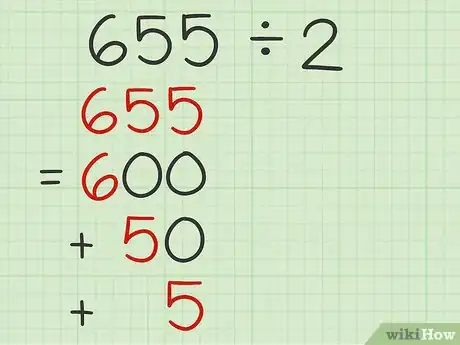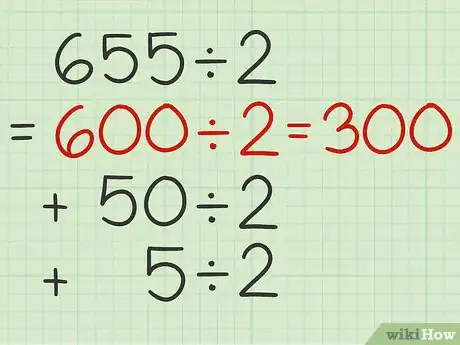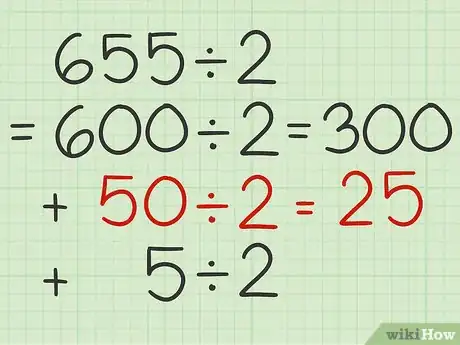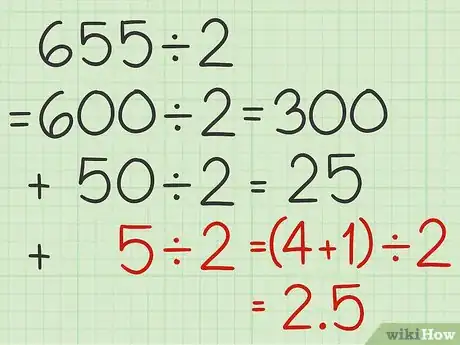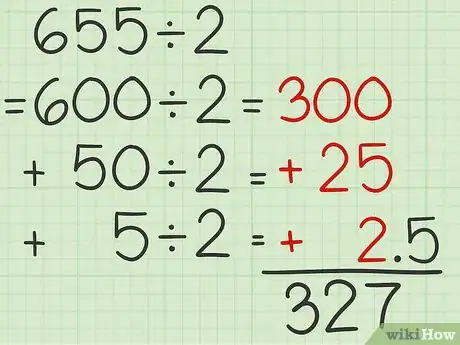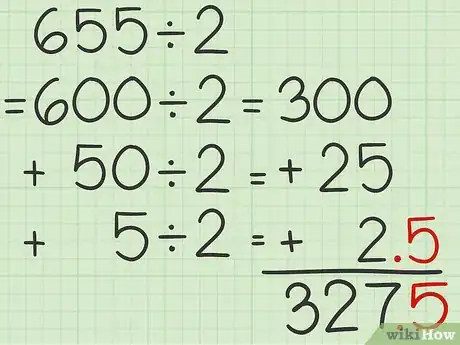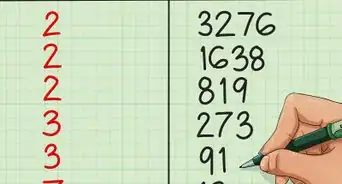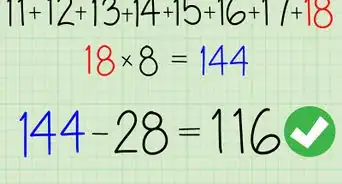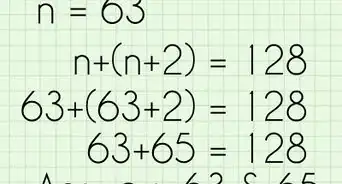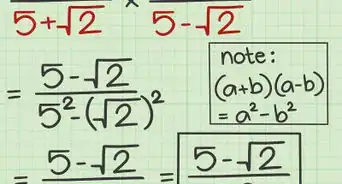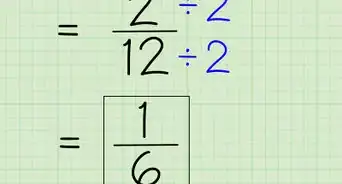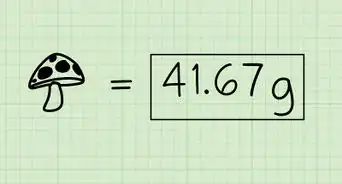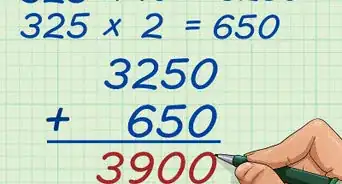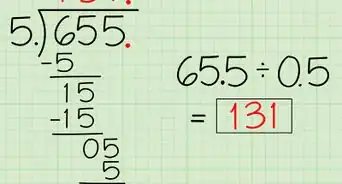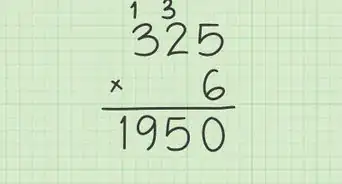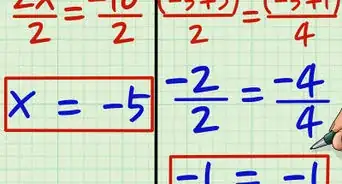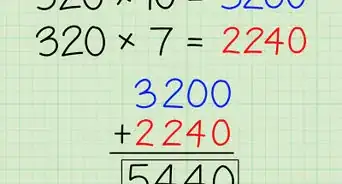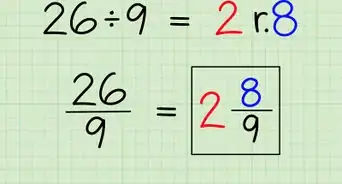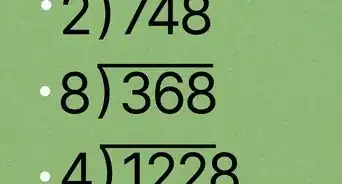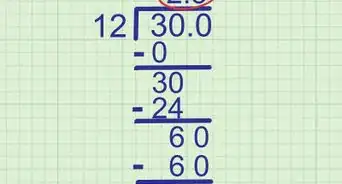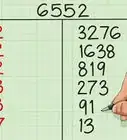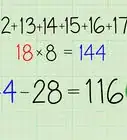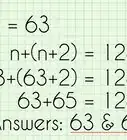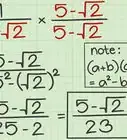This article was co-authored by wikiHow Staff. Our trained team of editors and researchers validate articles for accuracy and comprehensiveness. wikiHow's Content Management Team carefully monitors the work from our editorial staff to ensure that each article is backed by trusted research and meets our high quality standards.
This article has been viewed 71,383 times.
Learn more...
Odd number are numbers that are not a multiple of 2, such as 3, 5, 7, and 9. Since you can’t evenly divide an odd number in half, making such a calculation can be tricky. It’s important to remember that an odd number will have a remainder of 1 when divided by 2. By using this rule, you can break up a number and convert the remainder to easily divide.
Steps
Using Long Division
-
1Determine the dividend and the divisor. The dividend is the number you are dividing, the divisor is the number you are dividing by.[1] In this instance, the odd number will be the dividend, and the divisor will be 2.
- For example, if you are calculating , the dividend is 17, and the divisor is 2.
-
2Place the dividend under a long division symbol. A long division symbol looks like the left and top side of a box. Place the divisor on the outside of the long division symbol, to the left of the box.
- For example: .
Advertisement -
3Divide the dividend by 2. Since you can’t divide an odd number by 2, you need to find the greatest number of times 2 will divide evenly into the dividend. Use the multiples of 2 to help you determine what this number is. [2] Place this number on top of the division symbol.
- For example, the greatest number of times 2 can divide evenly into 17 is 8, since . So you should place 8 on top of the long division symbol.
-
4Multiply the number on top of the long division symbol by the divisor. Place this number below the dividend and subtract. The difference is your remainder. When you divide an odd number by 2, you will always have a remainder of 1.[3]
- For example, and , So .
-
5Convert the remainder to a fraction. To do this, change the remainder into the numerator of a fraction. The denominator of the fraction will be the divisor, in this case, 2.[4] You can change this fraction to a decimal as well. The fraction always converts to .
- For example, .
By turning the remainder into a fraction, you get .
By turning the fraction into a decimal, you get
- For example, .
Breaking Up a Two-Digit Number
-
1Turn the number you are dividing into an even number +1.[5] An odd number will always have a remainder of 1 when dividing by 2. So breaking up the number in this way helps you divide the number quickly, since an even number will have no remainder when dividing by 2. To break up the number into an even number +1, subtract 1 from the number.
- For example, if you are calculating , break up into .
-
2Divide the even number by 2. You will likely be able to do this in your head, since it will divide evenly. The easiest way to do it is to take half of the tens and half of the ones, then add them together.
- For example, half of 70 is 35, and half of 4 is 2, so .
-
3Add 0.5 to the quotient. Since to reach your final answer, you need to add the two parts together: the even number divided by 2, and 1 divided by 2.
- For example, . So, .
Breaking Up a Three-Digit or Larger Number
-
1Write the number in expanded notation. Expanded notation is breaking up the number to show the value of each digit, according to its place value.[6]
- For example, .
-
2Divide the hundreds place by 2. Or, if you have a larger number, begin with the largest place value, such as thousands or ten thousands. You will likely be able to complete this division in your head. If not, you can calculate it quickly by hand. Since the number ends in 0, it is even and will be evenly divisible by 2. Set this quotient aside for now.
- For example, .
-
3Divide the tens place by 2. You will likely be able to do this in your head, but you can also do it by hand if need be. Since the number is a multiple of 10 it will be evenly divisible by 2. Set this quotient aside for now.
- For example, .
-
4Break up the number in the ones place into an even number +1. Then, divide the even number by 2. You should have no remainder; the remainder is the +1 you removed when you broke up the number.
- For example, . Now, dividing the even number, you should calculate .
-
5Add the quotients for all the place values. Since you expanded the number into place values, and divided each place value individually by 2, now you have to add them back together again.
- For example, .
-
6Add 0.5 to the sum. Since you removed the remainder of 1 from the ones place before dividing by 2, you now have to take half of that 1 and add it back into your final answer.
- For example, .
Community Q&A
-
QuestionWhat is 41 divided by 2?
 LinnieTop Answerer41 divided by 2 is 20.5. 41 = 40 + 1, so you could attempt this problem by saying that 40/2 is 20 and 1/2 is 0.5. Adding the two gives you 20.5.
LinnieTop Answerer41 divided by 2 is 20.5. 41 = 40 + 1, so you could attempt this problem by saying that 40/2 is 20 and 1/2 is 0.5. Adding the two gives you 20.5.
References
- ↑ https://www.mathsisfun.com/numbers/long-division-animation.html
- ↑ https://www.khanacademy.org/math/arithmetic-home/multiply-divide/mult-digit-div-2/v/division-2
- ↑ http://mathworld.wolfram.com/OddNumber.html
- ↑ https://www.mathsisfun.com/numbers/division-remainder.html
- ↑ http://www.themathpage.com/arith/parts-of-numbers_2-2.htm
- ↑ http://www.mathsisfun.com/definitions/expanded-notation.html
